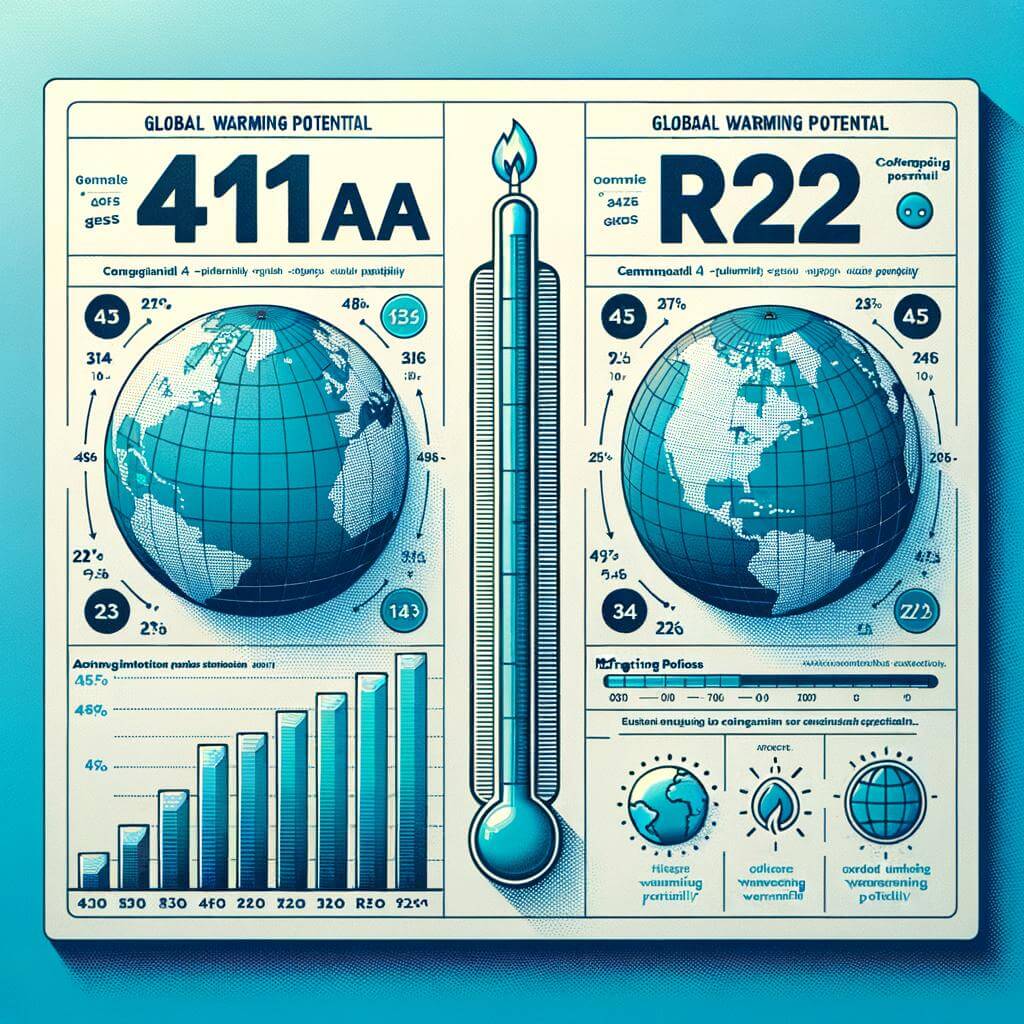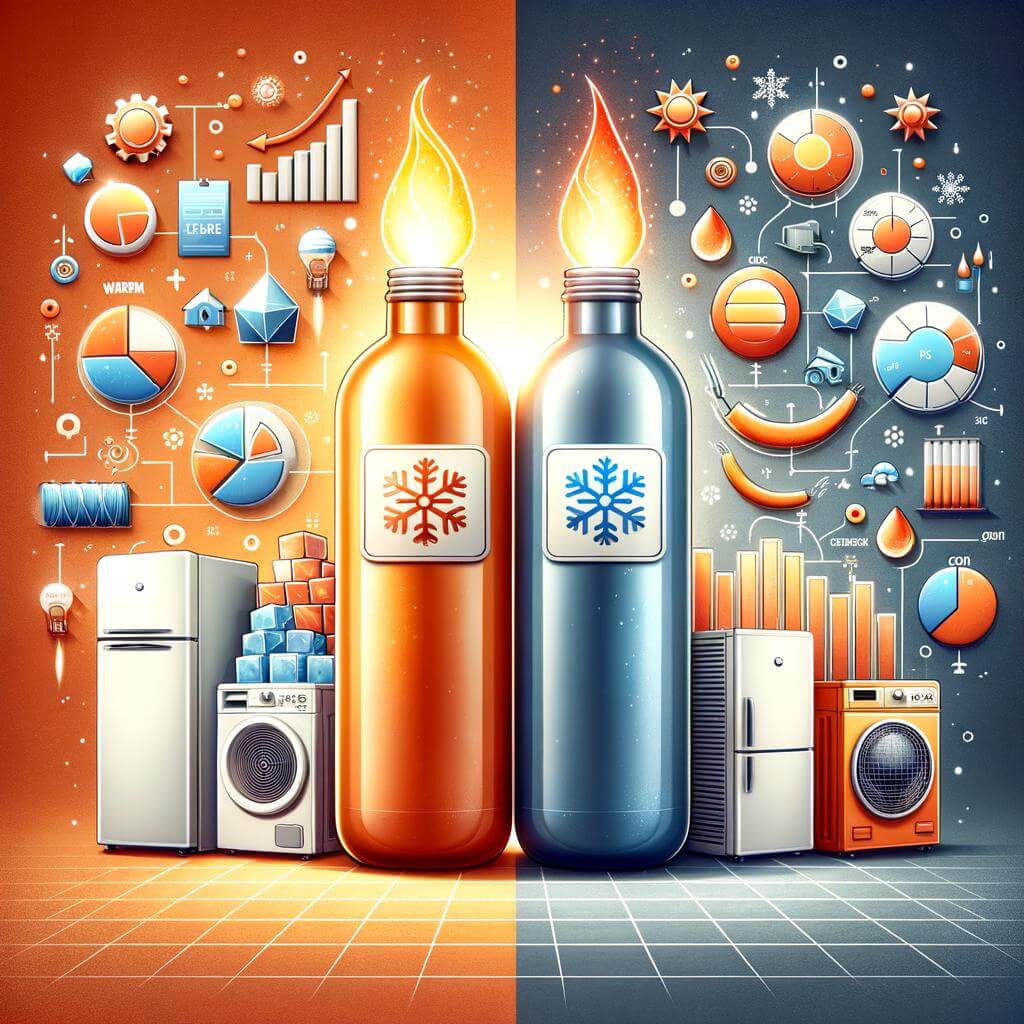Hello folks, ever heard of 410a and R22? Chances are, unless you’re knee deep in the world of HVAC, these might be foreign terms for you. But don’t worry, we’re about to turn up the heat and chill the confusion with some scientific real talk. These bad boys are refrigerants, and they’ve been in the ring for quite a while, causing debates and different opinions with environmentalists and HVAC experts. Whether you’re a seasoned pro or just a newbie in the HVAC game, our guide gives you the nitty-gritty details and breaks down the cold, hard facts of 410a versus R22 refrigerants. So grab your mittens, it’s about to get frosty in here!
Unmasking the Characters: Understanding 410a and R22 Refrigerants
410a and R22 refrigerants are the main players in the world of cooling systems. Understanding their unique characteristics and differences is essential for anyone looking to navigate the chilly landscape of HVAC systems. Let’s dive into the scientific lowdown on 410a vs R22 refrigerants. First up, we have 410a, also known as R410a. This refrigerant has become the go-to choice for many HVAC professionals due to its high energy efficiency and environmental friendliness. 410a operates at a higher pressure than its counterpart, R22, but it still manages to deliver top-notch cooling performance. One of the standout features of 410a is its ability to absorb and release more heat, making it highly efficient when it comes to cooling your space. With 410a, you can expect lower energy consumption and a reduced carbon footprint, making it an eco-conscious option. Now, let’s unravel the mysteries of R22. This refrigerant, also called Freon, has been a staple in the HVAC industry for years. However, it has faced scrutiny due to its harmful effects on the ozone layer. As a result, it has been phased out in many countries, with restrictions on its production and use. R22 operates at a lower pressure than 410a, making it more suitable for older systems. While it may still be found in some places, it’s becoming increasingly rare and costly. If you have an older system that relies on R22, it might be time to consider an upgrade to a more sustainable alternative like 410a.
Chilling Facts: Environmental Impact of 410a vs R22
Did you know that the refrigerants 410a and R22 have contrasting environmental impacts? Let’s dive into the chilling facts and explore the scientific lowdown on these two commonly used refrigerants. When it comes to global warming potential (GWP), 410a takes the lead. This environmentally-friendly refrigerant boasts a significantly lower GWP compared to R22. With a GWP of only 2,088, 410a is a much better choice for the ozone layer and reducing greenhouse gas emissions. On the other hand, R22 has a GWP of 1,800 and is known to contribute to ozone depletion and climate change. So if you’re looking for a refrigerant that can keep things cool without putting the environment at risk, 410a is the way to go. But it’s not just about global warming potential. 410a also has better energy efficiency, making it a more sustainable option for refrigeration and air conditioning systems. Its higher cooling capacity means that it can do the same job as R22 while using less energy. This not only helps reduce utility bills but also minimizes the overall carbon footprint. So if you want to save the planet and save some money in the process, switching to 410a refrigerant is a smart choice. Keep in mind that the availability of R22 is declining due to the phase-out regulations set by the Environmental Protection Agency (EPA). This means it’s time to start considering alternatives like 410a, which not only has a lower impact on the environment but also ensures compliance with the latest regulations. So, next time you’re thinking about refrigerants, remember the chilling facts about 410a and R22, and make an informed decision to protect the planet.
Cool Contenders: Performance Comparison of 410a and R22
410a and R22 are two popular refrigerants used in air conditioning systems. Both have their own advantages and disadvantages, and understanding the differences between them can help you make an informed decision when it comes to cooling your space. One major difference between 410a and R22 is their impact on the environment. R22 is a hydrochlorofluorocarbon (HCFC), which has been found to deplete the ozone layer. As a result, its production and use are being phased out worldwide. On the other hand, 410a, also known as Puron, is a hydrofluorocarbon (HFC) that does not deplete the ozone layer. It has much lower impact on global warming potential, making it a more environmentally friendly choice. In terms of performance, 410a has a higher cooling capacity compared to R22. This means that air conditioning systems using 410a can provide more efficient cooling, leading to lower energy consumption and potentially reduced electricity bills. Additionally, 410a is known for its superior heat transfer properties, resulting in better heat exchange and improved overall system performance. When it comes to compatibility, it’s important to note that 410a and R22 are not interchangeable. This means that if your system was originally designed to use R22, it cannot be retrofitted to use 410a without significant modifications. However, if you’re purchasing a new air conditioning system, it’s worth considering models that use 410a, as it is the future of refrigerants and will be more readily available and cost-effective in the long run. In conclusion, while both 410a and R22 are capable refrigerants, 410a offers superior environmental friendliness and performance. Its lower impact on the ozone layer and global warming potential make it a responsible choice for a sustainable future. When considering a new air conditioning system or retrofitting an existing one, it’s wise to opt for 410a to reap the benefits of improved cooling efficiency and energy savings.
Final Face-off: Which is the Better Refrigerant for Your Cooling Needs?
again. And there you have the scoop – a deep freeze plunge into the world of 410a and R22 refrigerants. Remember, knowledge is power in making decisions about your air conditioning needs. They both have their pros and cons, but with the phase-out of R22, it’s high time to turn the tide toward 410a. Just like choosing between ice cream flavors, in the end, it all boils down (or should we say cools down?) to your specific needs and what works best for you. Just strap on your science helmets and keep your cool – be it an Arctic adventure or a tropical diversion, your refrigerant choice can gear your comfort up to full blast! Until next time, stay frosty, friends!




